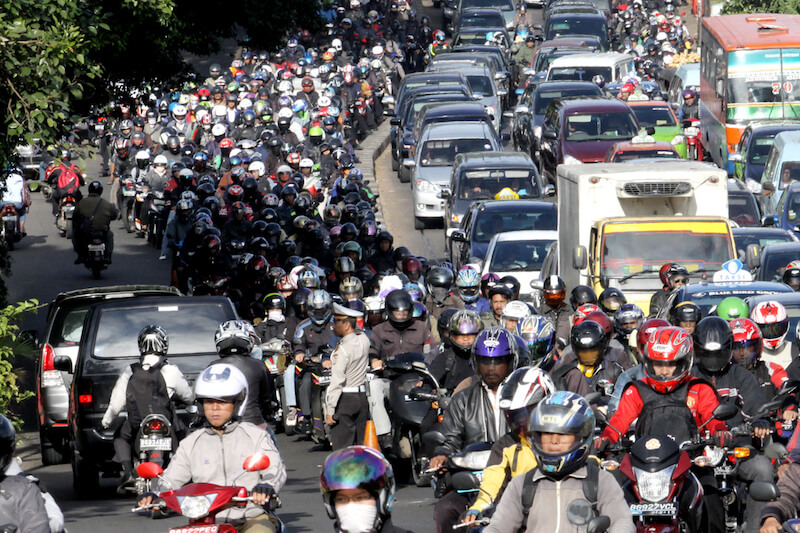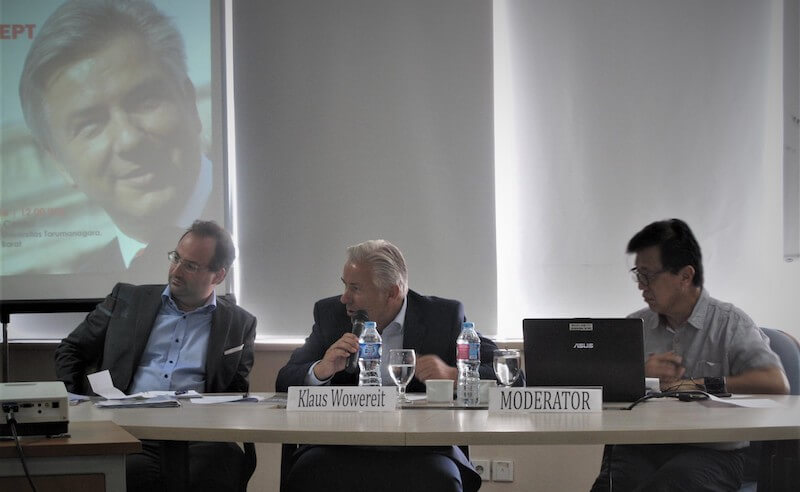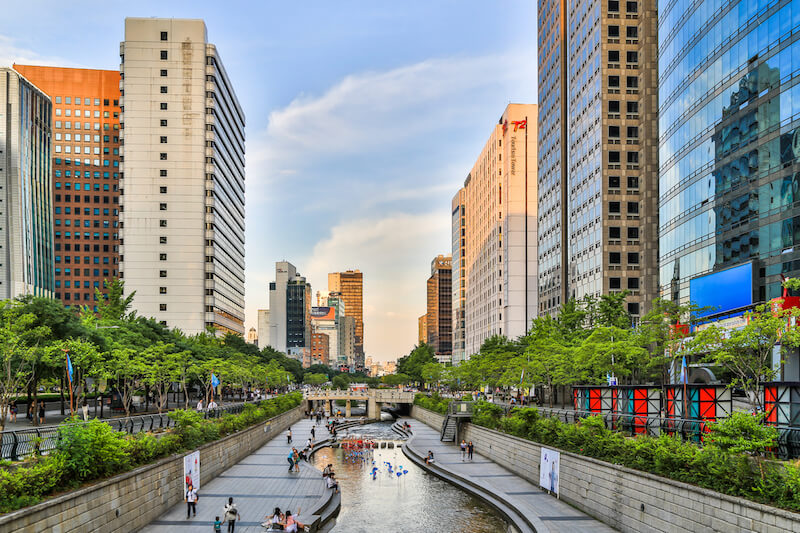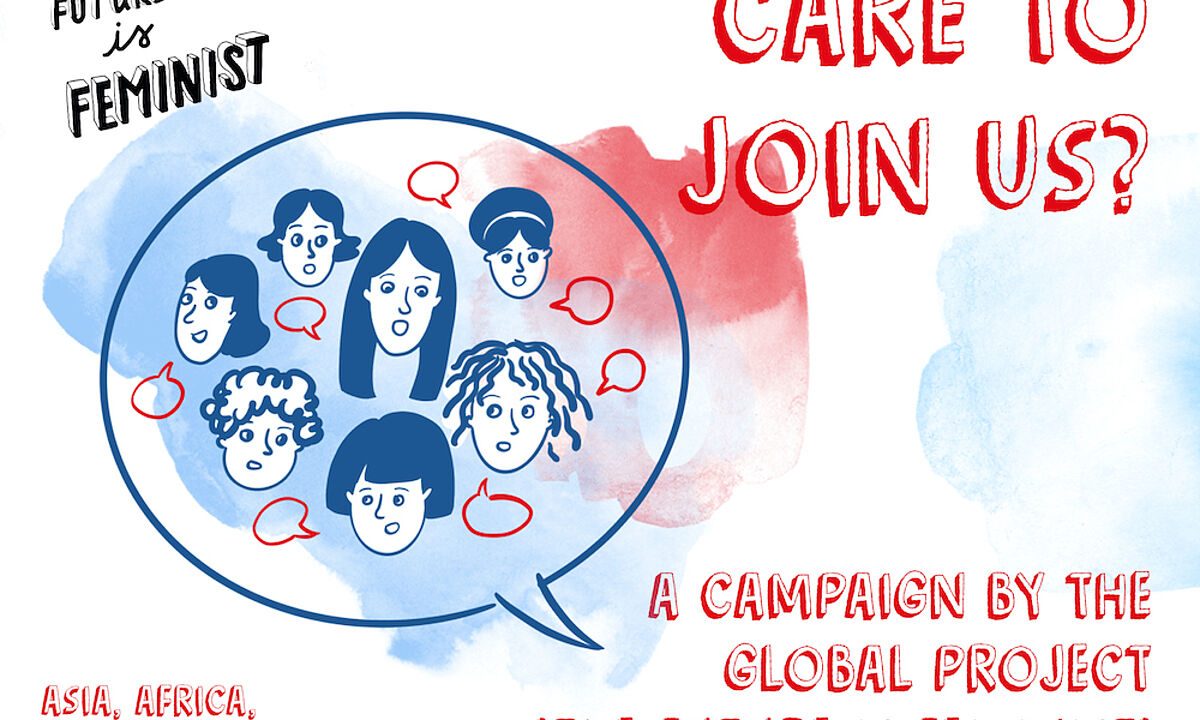Jakarta: an adventure in urban planning
Indonesia's teeming capital is notorious for gridlock, pollution, poverty, and flooding. But its experiences may hold long-term lessons for the growing numbers of megacities worldwide, and, by extension, for the future of our urbanizing global society.
Based in Jakarta, the office of Friedrich-Ebert-Stiftung in Indonesia has been working on social transformation on city level. In this interview, FES country director Sergio Grassi, who also coordinates regional activities in Asia on the topic of social city, explains some of the dynamics at stake, the activities on urban transformation in the pipeline by FES in Jakarta and how the city earned its nickname after a famously malodorous tropical fruit.
Mr Grassi, you are heading the office of Friedrich-Ebert-Stiftung in Jakarta. How have you experienced the city and the country so far?
I am now working and living with my family for two years in the Big Durian, the nickname of Jakarta. The durian, a smelly, spiny local fruit much loved by locals but hard on the nose to anyone who didn't grow up with it, seems an appropriate metaphor.
The megacity of Jakarta has a lot of charming places to discover and offers a lot of surprises, once you dare to take a bite. However, being a native of the city of Berlin—a very green, pedestrian and bicycle-friendly city—Jakarta is sometimes challenging. The Indonesian saying Tua di Jalan, which translates as growing old on the streets, describes the daily marathon of patience needed to endure Jakarta's traffic. The perpetual gridlock shapes the rhythm of the metropolis and the everyday lives of its inhabitants.

Those who can afford to take a break from the grind by heading for one of the megacity´s 180 shopping malls. By contrast, public parks, playgrounds, and even accessible pavements have become rare, and walking correspondingly unpopular. Public space is primarily reserved for residents with sufficient purchasing power, while excluding everyone else.
The situation on the real estate market also tends to exclude. Central Jakarta has increasingly become the domain of expensive office complexes and luxury apartments. In greater Jakarta, annual increase of land prices has reached 17 per cent while increases in income are only at around 10 per cent. Hence, especially for the young generation, owning one’s own house will be more and more difficult to achieve, making house ownership increasingly a privilege of the rich.
What is the current situation with urban planning in Jakarta and in Indonesia?
Indonesia with its 255 million inhabitants and 17,000 islands is entering a peak period of urbanization. More than 30 cities across the country have a population of more than 1 million. Greater Jakarta (Jabodetabek) has a population of 28 million. The Indonesian national government has made many attempts to mitigate the greatest challenge of this urban transformation – affordable adequate housing - through programs such as the Housing Financing Liquidity Facility, Special Housing Development, Rusunawa (low cost rental apartments), self-help houses, and the 1 Million Houses Program. In 2014 the government set the target of “100 – 0 – 100”. Thus means 100 percent access to sanitation, zero slums and 100 percent potable water networks by 2019.
The Smart City urban development concept, which implies the use of network connectivity for e-governance, communication, collaboration, urban planning and other activities, has been applied in many cities in Asia - including in Indonesia, including Jakarta - in recent years. The Jakarta provincial government opened a Smart City unit in 2014 that focuses on collecting big data and analysing it to drive the city’s decision-making.
The Smart City concept primarily pleases technology and construction companies interests as well as some other private investors, and doesn’t solve the root of the problems that prevail.
The former governor of Jakarta, Basuki Tjahaja Purnama nicknamed Ahok proudly showed visitors the newly launched Jakarta smart city control room in his residence.
Directly above his office, up to 90 employees evaluate data from video cameras set up across the city as well as monitoring incoming reports from netizens, all displayed on an oversized control screen. On the other hand, the futuristic control centre reflects the fascination with technology that is widespread in Asia.
And indeed, smartphone and IT applications can make everyday life easier, especially when the infrastructure is decrepit. On the other hand, the control room makes it obvious that Jakarta's former governor, like many other community leaders in Asia, views neighbouring Singapore as a model.
The Smart City concept, however, primarily pleases technology and construction companies interests as well as some other private investors, and doesn’t solve the root of the problems that prevail. By contrast, data protection and especially the social aspects of urban development are being put on the back burner as the city´s social functions are de-emphasized.
Against this background, Indonesian civil society and urbanists are expressing their desire for more liveable, inclusive and socially conscious cities-ones based on more integrated, participatory and holistic planning.
According to the Indonesian Vice-Minister of Culture Hilmar Farid, a former professor and political activist, the social city concept would dovetail nicely with President Jokowi’s goal of developing the country from the periphery inward. That principle could be adapted to the city, where people on the margins of society were supposed to be helped. Furthermore, Farid advised that we should regard culture as an important instrument for transforming the city in the future. People in Indonesian cities live on different cultural and historical layers - from precolonial and colonial to modern, and private-capital driven - all of which need to be connected. In the context of an integrated scheme of urban development, artists could play a key role alongside city planners and residents.
The incoming governor-elect of Jakarta has cleverly exploited the weaknesses of his predecessor by promising to work with communities to put an end to evictions and ensure accessibility to affordable and appropriate housing to Jakarta’s low- and middle-income citizens, while he also advocated greater citizen involvement at the grassroots level.
Former governor Ahok made a name for himself with his pragmatic and no-nonsense approach. During his time in office, it’s been reported that Jakarta underwent progressive modernization: the improvement of sanitation, a decrease of corruption and a reduction of the annual flooding. Nevertheless, he was not totally free of criticism as he ordered evictions from poorer neighbourhoods in order to put his progressive plans into practice. He pursued large Smart City projects, which have rather increased exclusiveness, served the interests of private investors and rather de-emphasized the social concerns of the population. How can these contradictory trends be explained? Which impact did these trends have on the daily lives of the people?
Ahok had the reputation for getting things done, like improving the city's sewer system, reducing the annual flooding of the city and enhancing the municipal administration. He also reduced corruption in the administration, while he was never accused of being corrupt himself. A reputation that made him very popular on one hand, but also made him enemies.
Ahoks’ increasing neglect of social contracts with civil society and the urban poor also paved the way for populist and extremist politicians and groups to mobilize the masses by means of religious identity politics against him
Last but not least, he pushed urgently needed infrastructure projects like the subway. Planned for 20 years, and repeatedly delayed, it is due to be ready in 2018. If and when it is completed, it would be the most effective antidote to the megacity´s daily gridlock. However, Ahok was very hard-nosed in his pursuit of getting things done. When we met him together with the then mayor of Berlin Klaus Wowereit in September 2016 in Jakarta, he stated bluntly that he would ignore complaints by NGOs or others related to infrastructure projects to avoid any further delay.

Many observers might argue that the politicizing of religion and ethnicity were the only reasons for Ahok's defeat in the May 2017 election. However, his increasing neglect of social contracts with civil society and the urban poor also paved the way for populist and extremist politicians and groups to mobilize the masses by means of religious identity politics against him.
In fact, Ahok's persistence in executing forced evictions of informal, yet often decades-old settlements of urban poor, in the framework of his modernization policy, has gained international attention and raised concerns over human rights abuses.
What can be a progressive and inclusive approach to urban planning? Do the FES colleagues in Jakarta and elsewhere in Asia have something in the pipeline on this front?
In Germany, the Social City concept has been introduced as cornerstone of urban development planning since 1999. In 2014, it was even made the guiding concept for all urban development planning in Germany, given the satisfactory results.
In Asia, the development of South Korea's capital Seoul in recent years demonstrates in impressive fashion how things can be different. There, the progressive mayor Park Won-Soon has - in his own words - initiated a deliberative paradigm shift since taking office in 2011. Instead of abandoning Seoul to private investors and competition, he aims to transform the capital (the metropolitan area of which houses half of South Korea's population) into an inclusive city.
By encouraging greater citizen involvement and the reclamation of public spaces, the mayor and his aides really have succeeded in making Seoul noticeably more liveable again, according to the testimonies of Korean urban development experts and representatives of civil society.
Numerous indications of the paradigm shift are visible in the cityscape, including new parks and meeting places, a re-naturalized river in the city centre, broadened pavements, artists' projects, services provided by the sharing economy, and initiatives to protect historic monuments.

While in many Asian countries, more socially minded urban development concepts are promoted mainly by civil society, the inclusive development of Seoul provides an inspiring example of an Asian megacity administration that prioritizes the social function of a city.
FES in Jakarta therefore intends to facilitate the exchange on the experiences with social and inclusive urban development concepts within Asia by involving urbanists from across Asia, SocDem Asia, and experts from Germany. An important milestone in this endeavour is an Asia-wide conference titled "Social City – Aspiration of an urban transformation in Asia," that will take place in November in Jakarta.
One characteristic of an integrated urban development concept like the Social City is a holistic strategy and the involvement of all administrative departments. But another is the involvement of external actors, such as businesses, culture, and above all local citizens.
Local populations are often experts in that they are well aware of the local problems and possibilities available for overcoming them, especially in the denser spatial environment. Neighbourhood management serves accordingly as the interface between citizen and the administrative authorities and is the framework of action for the Social City concept. ###
Sergio Grassi is the country director of Friedrich-Ebert-Stiftung in Indonesia. In Asia, he coordinates the regional work by FES on two specific sectors of transformation, Automation and The Social City.
About FES Connect
Connecting people, in the spirit of social democracy, we source and share content in English from the German and international network of the Friedrich-Ebert-Stiftung.




